
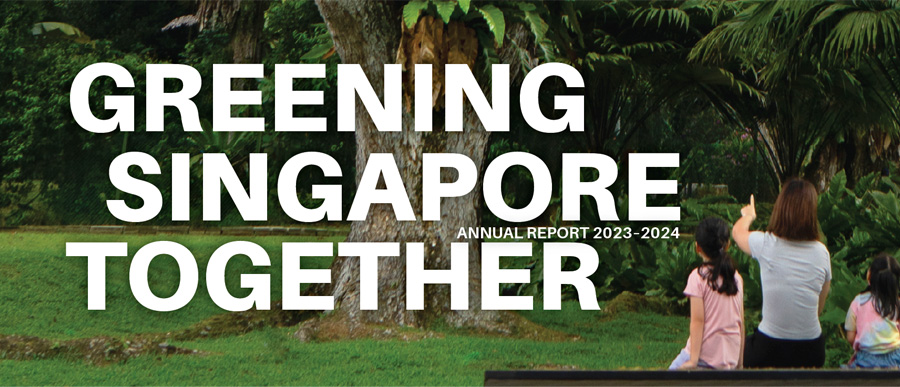
NParks enables synergistic knowledge-building through conferences and expert collaborations within and across borders as it continues to support progress in environmental science and technology.
The Slaty-breasted Rail (Gallirallus striatus) is one of over 4,500 newly included species in the 3rd Edition of the Singapore Red List. Released in 2023, this is the most comprehensive list to date, and will guide the planning and prioritisation of habitat restoration and species recovery efforts in Singapore.
Photo credit: Francis Yap
Singapore hosted the Asia Pacific Orchid Conference (APOC) for the first time in August 2023, co-organised by NParks and the Orchid Society of South East Asia. A triennial international orchid event, APOC is the largest gathering of orchid researchers, professional growers and enthusiasts in the Asia Pacific region and comprises a scientific programme as well as an orchid show. APOC aims to facilitate the exchange of knowledge, practices, and trends in orchid cultivation, science, and conservation.
The orchid show component of this 14th APOC featured over 8,000 orchid plants from nearly 1,000 species and hybrids and attracted over 50,000 visitors. It consisted of competitive orchid plant and orchid landscape displays from various participating countries, as well as special displays such as Floral Fashion, by students from the Nitec in Floristry course of the Institute of Technical Education (ITE) Central.
The Conference theme of Diversity, Conservation, Culture was exemplified in the diversity of orchid species and hybrids on display, promoting research and academia in the Orchidaceae family and celebrating a growing culture of orchid appreciation amongst all visitors.
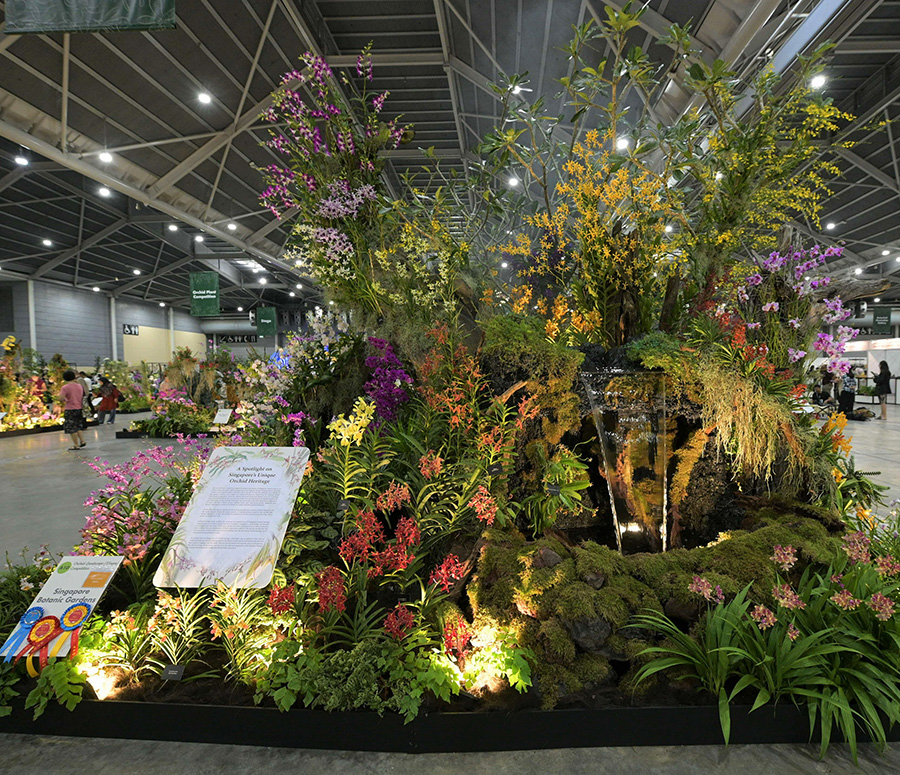

The Marine Climate Change Science Programme is a S$25 million research initiative led by NParks and funded by the National Research Foundation within the Prime Minister’s Office of Singapore. Through collaboration among government agencies, research institutes, and industries, it aims to advance marine conservation research and safeguard the island’s coastal and marine ecosystems as we transform Singapore into a City in Nature. Two projects, by the National University of Singapore (NUS) and Nanyang Technological University, were awarded under the most recent grant call and are part of efforts to understand the role of coastal and marine habitats as nature-based solutions amidst climate change projections.
In line with these research efforts, NParks supported the 5th Asia-Pacific Coral Reef Symposium organised by NUS, which facilitated collaboration and knowledge exchange among the region's scientific community, promoting integrated approaches to address the challenges facing coral reef ecosystems in the region. Over 800 participants from some 40 countries participated in 39 thematic sessions and 11 workshops, with the avenue to share knowledge and expertise and forge greater collaboration for international conservation efforts.

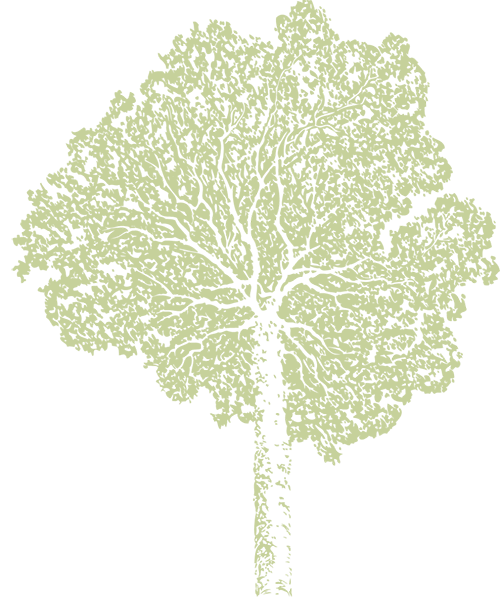
Many experiments were undertaken to result in the prevalent urban greenery we see in Singapore today. Mr Chuah Hock Seong, Senior Director for Ops Tech & Development (Streetscape), is a trained horticulturalist who helped realise Singapore’s early vision of a Garden City. He speaks about how the Centre for Urban Greenery and Ecology (CUGE) has worked alongside the landscape industry to green up Singapore.
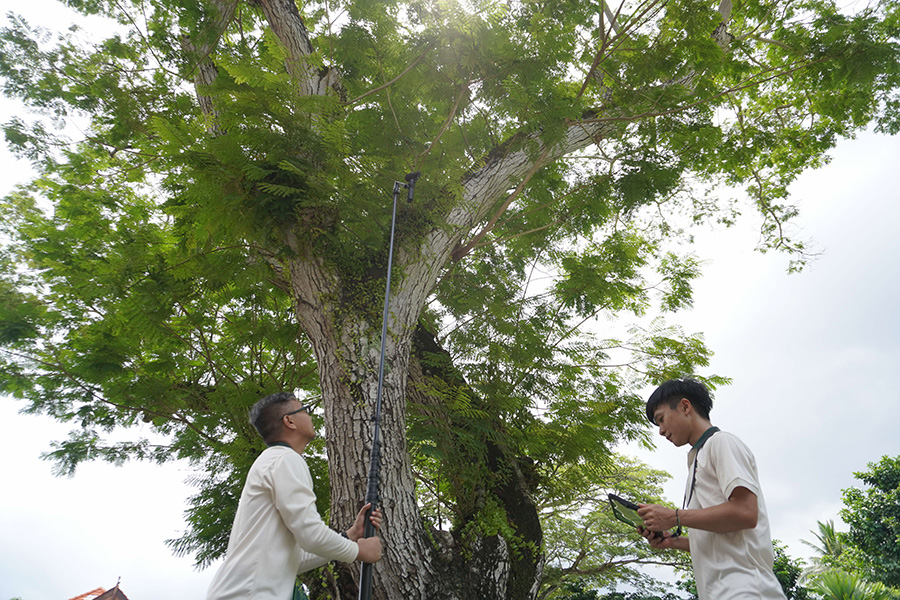
At the Green Thumbs Conference in 2023, NParks announced the implementation of a new model of greenery management for parks and streetscapes that leverages digital tools and technology, culminating from over three decades of research and partnership with the landscape industry. The event, co-organised with the Landscape Industry Association of Singapore (LIAS), was a platform for over 300 industry partners, students and professionals in the industry to learn best practices in arboriculture, horticulture, and playground safety. Collaborations with the landscape industry have been crucial in Singapore’s greening journey and in its efforts to transform into a City in Nature.
The new greenery management model will first be rolled out in the Bishan-Ang Mo Kio district, in partnership with a contractor appointed via an open tender system, to enhance productivity in landscape operations as well as attract and train up local talent. The partnership will tap on digital tools to synergise operational work, such as Maven 2, a centralised platform for greenery management and the Remote Tree Management System, which collates tree data using LiDAR technology.
Beyond greenery management, CUGE also launched new workshops for staff and industry participants, such as the Designing Therapeutic Horticulture Programmes for Children with Special Needs, Playground Safety Management, Design and Assessment with the Contemplative Landscape Model, and Animal Movement Analysis Workshops.
NParks continues to build on its foundation in science and technology as well as research and development. In the reporting year, we announced plans to enhance the greenery management of parks and streetscapes through enhanced digital tools.
NParks' adoption of technology is integral to its digitalisation roadmap, enhancing productivity through data-driven solutions. By collecting and consolidating information for predictive management, digitalisation elevates the capabilities of staff and operational efficiency, supporting Singapore's greening efforts in its transformation into a City in Nature.
Supporting this digitalisation push is a S$7.5 million grant under the Landscape Sector Transformation Plan, aimed at boosting productivity and facilitating technological transformation in the landscape and animal sectors. The grant will help defray costs for landscape companies and nurseries investing in new digital solutions.

In 2023, 16 parks and developments were recognised for landscaping excellence under the Landscape Excellence Assessment Framework (LEAF). Rifle Range Nature Park, one of the buffer parks to the Bukit Timah Nature Reserve, received top honours for its enhancement of ecological connectivity and for being Singapore’s first net- positive energy Nature Park, where solar panels harvest more energy than the park’s operational energy consumption.
LEAF serves to encourage exceptional landscape design, construction, and management that integrates nature into the urban landscapes, one of the key thrusts of transforming Singapore into a City in Nature.
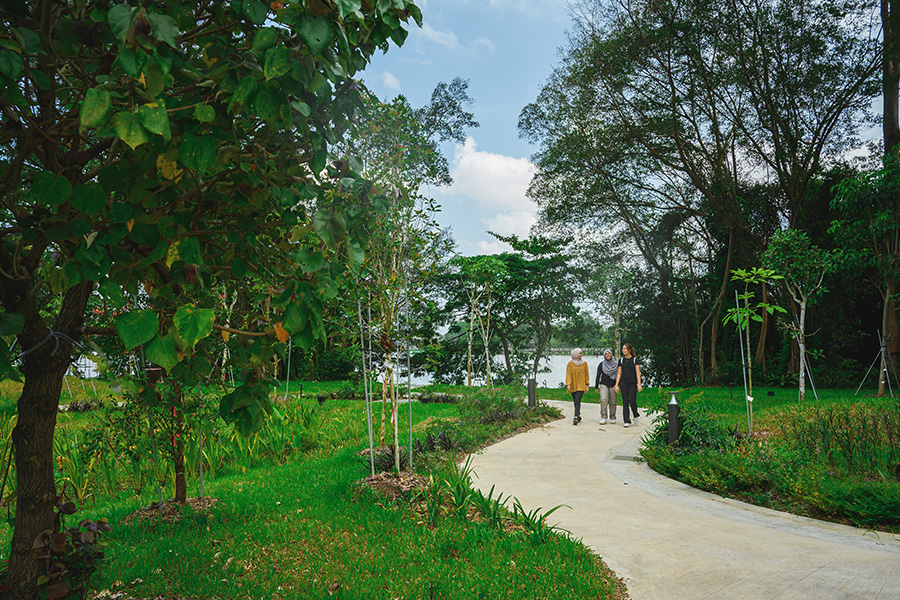



Ms Kannagi G, Director for Development Management, who has dedicated her life’s work to developing parks reflects on how they have evolved over time. Citing her involvement in Thomson Nature Park, she shared why her involvement in developing parks for the community means so much to her.
As Singapore moves towards becoming a City in Nature, integrating nature into our urban landscape grows increasingly crucial.
The second development phase of Jurong Lake Gardens exemplifies NParks’ commitment to sustainable development, earning the prestigious Platinum Super Low Energy Rating under the new Green Mark Standard (2021). The award highlights the project’s exceptional energy efficiency, inspiring future developments that also utilise sustainable energy building and management strategies.
With energy-efficient features like High-Volume Low-Speed Fans and solar panels generating 100 MWh/year, along with advanced water cleansing circulation systems, bio-retention basins and rain gardens that treat surface water runoff, the project set a new benchmark for clean energy and water conservation in urban landscapes.
NParks reaffirmed its commitment to biodiversity conservation through the signing of Memoranda of Understanding (MoU) with international partners. The MoUs with the Department of National Parks, Wildlife and Plant Conservation of Thailand and the Pahang Biodiversity Council bolster the exchange of knowledge and expertise in wildlife health, forensics and the management of botanical gardens and arboreta. These agreements aim to protect native flora and wildlife by sharing best practices, raising public awareness, and organising educational workshops and symposia to promote research initiatives.

NParks' commitment to ecological resilience and public health extends to innovative approaches leveraging science and technology. This helps address public health challenges arising from climate change and the movement of people, animals and vectors across borders, strengthening biosurveillance efforts and empowering industry stakeholders and the wider community with essential knowledge on zoonoses prevention.
NParks launched a groundbreaking $15 million Biosurveillance Research programme under the Research, Innovation and Enterprise 2025 plan, to advance the scientific understanding of zoonotic diseases in Singapore, as well as their risk factors, and develop evidence-based mitigation strategies. The programme will leverage advanced technologies and interdisciplinary research to track pathogens and study their behaviour in animal hosts, vectors and the environment. Overall, this programme seeks to build ecological and public health resilience against biosecurity threats, safeguarding animal, human and environmental health.
Singapore is a signatory to the Convention on International Trade in Endangered Species of Wild Fauna and Flora (CITES) and adopts a zero-tolerance stance on the illegal trade of wildlife species as well as their parts and derivatives. National and international enforcement agencies have cooperated to detect and intercept the trade routes of illegal wildlife products, resulting in the sentencing of one such offender, who attempted to smuggle 34.7 kg of rhinocerous horns, to two years in jail.
Advanced forensic techniques are invaluable tools for combating illegal wildlife trade, enabling the identification of illegally trafficked wildlife with speed and precision. Rapid and scalable methods are essential to quickly genotype a sizeable subset of a consignment, so as to derive necessary data about the illegal wildlife products to share with law enforcement and conservation organisations who help to curb poaching and illegal trade at the source.
To this end, the Centre for Wildlife Forensics (CWF) developed a scalable and cost-effective genotyping method for pangolin scales. This cutting-edge forensic technique allowed CWF to genotype 2,346 pangolin scales — the record number of pangolin scales genotyped to date — and produced insights on the geographical origin of the scales. The study described how the methodology could be applied to genotyping other wildlife seizures, aiding the global fight against illegal wildlife trade.
Since the 19th CITES Conference of Parties in 2022, around 90 per cent of all internationally traded species of sharks and rays can be traded only if their stocks are not endangered as a result. Following this heightened protection of shark and ray species under CITES, CWF also intensified its efforts to enhance regional capacity in combating the illegal trade of shark fins. In October 2023, the Centre conducted a training workshop for law enforcement officers to learn about tools and techniques used to detect illegal shark and ray products, including the use of FinFinder, Asia’s first AI-based mobile app for shark and ray fin identification. It was attended by almost 50 participants from the region.
Building on the success of the workshop, in 2024, NParks collaborated with the World Customs Organisation to organise an international training workshop on CITES-listed shark and ray species identification, to share knowledge about wildlife forensic research and species identification.

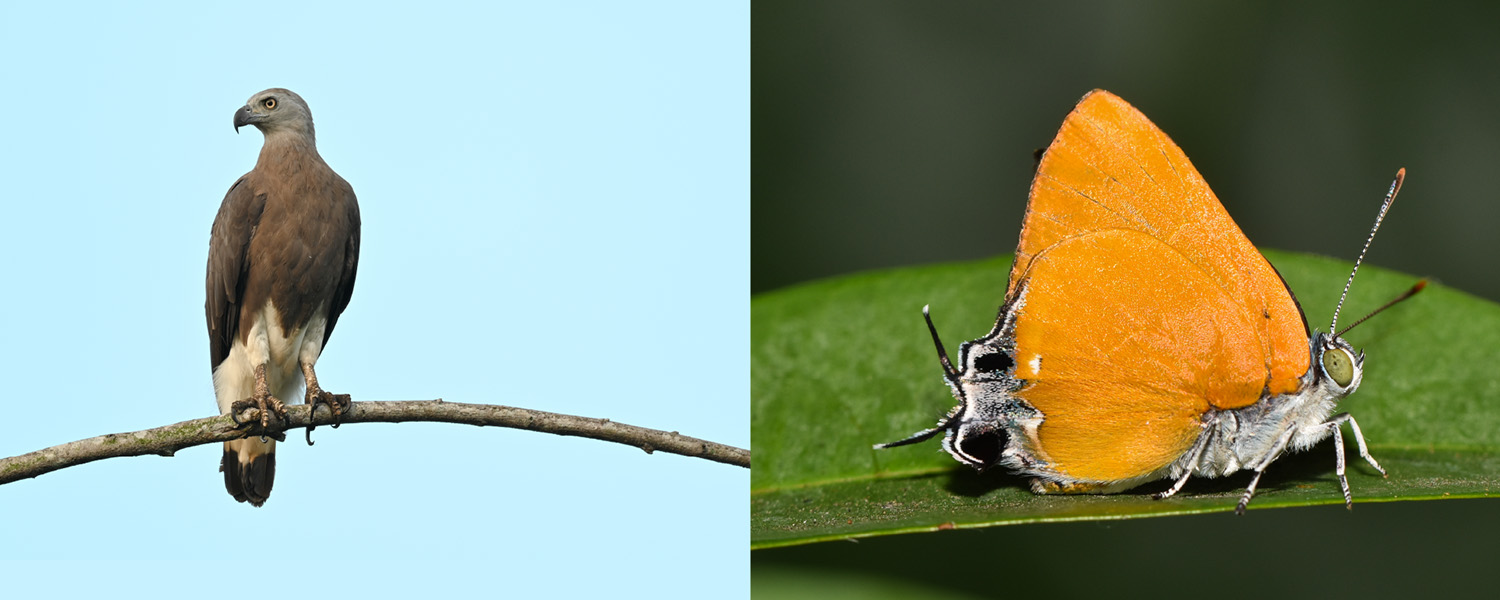
Photo credit: Sebastian Ow
A group of 25 Youth Stewards for Nature (YSN) organised the third annual World Wildlife Day Regional Youth Symposium, with support from NParks, Mandai Nature and the ASEAN Centre for Biodiversity. The Symposium, which was started by five youths under the YSN programme as a virtual conference in 2022 during the Covid-19 pandemic, has since grown into a regional meeting attracting 300 youths from 15 countries — its largest participation to date. The third run of the Symposium saw attendees learning about regional biodiversity conservation efforts and discussing their roles in contributing towards conservation.
The Symposium also served to garner the support and participation of youths in the new CITES Global Youth Network (CGYN), which would go on to be launched later in 2024. This initiative was first proposed by Singapore at the 77th CITES Standing Committee meeting in Geneva, Switzerland, in late 2023, where it was supported by the Parties to CITES. Kickstarted by alumni YSNs and supported by NParks, CGYN will provide a platform for knowledge sharing, network formation and the strengthening of international ties and capabilities that go towards understanding the intricacies of sustainable wildlife trade.
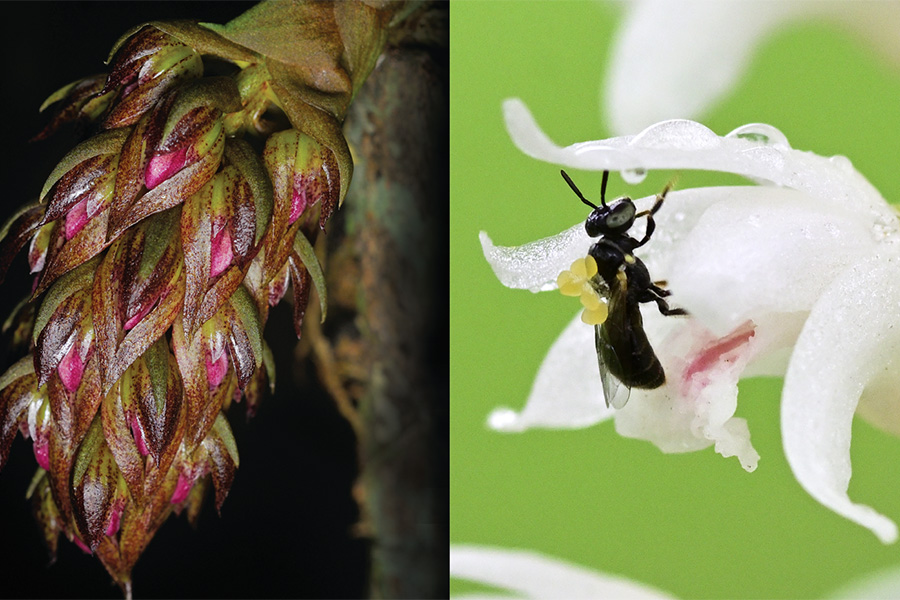
Photo credit: Dr Yam Tim Wing

Photo credit: Bryan Lim
Research informs conservation strategies and promotes long-term sustainability initiatives, aiding NParks in safeguarding our flora and fauna.
In June 2023, the third edition of the Singapore Red List was released, documenting the conservation statuses of over 7,300 algae, fungi, plant, and animal species across mainland Singapore and offshore islands — more than double the 2,900 species assessed in the previous edition.
Since the last edition, the conservation statuses of over 560 species such as the Grey-headed Fish Eagle (Haliaeetus ichthyaetus), Sunda Slow Loris (Nycticebus coucang) and Golden Royal butterfly (Pseudotajuria donatana) have improved. The updated list, a collaborative effort between NParks, the Lee Kong Chian Natural History Museum of the National University of Singapore and the Nature Society Singapore, will guide conservation initiatives such as habitat enhancement and species recovery programmes.
The Handbook on Habitat Restoration: General Principles and Case Studies in Singapore seeks to share global perspectives and promote ongoing evaluation for improved conservation outcomes. Launched in November 2023, this comprehensive compilation of project case studies from 24 diverse ecosystem sites across Singapore gives practitioners invaluable insights and practical tips for habitat restoration and enhancement efforts. The case studies also exemplify how NParks is Intensifying Nature in our Gardens and Parks, Restoring Nature into the Urban Landscape and Strengthening Connectivity between our Green Spaces — three key thrusts of how Singapore is transforming into a City in Nature.
Researchers from the Singapore Botanic Gardens also released the 2nd edition of Native Orchids of Singapore. The informative guide features case studies on nature conservation and 70 beautifully illustrated profiles of native orchid species, including the endemic Nervilia singaporensis, further cementing the Gardens’ role in providing expertise on local orchid flora and its conservation.

The Singapore Botanic Gardens is a leading botanical institute and plays an important role in the research and conservation of local plant species. Prof Tan Puay Yok, Group Director of the Singapore Botanic Gardens speaks about the Gardens’ Herbarium, where some of the region’s oldest plant specimens are stored and the Seed Bank, a stronghold of seeds native to Southeast Asia.